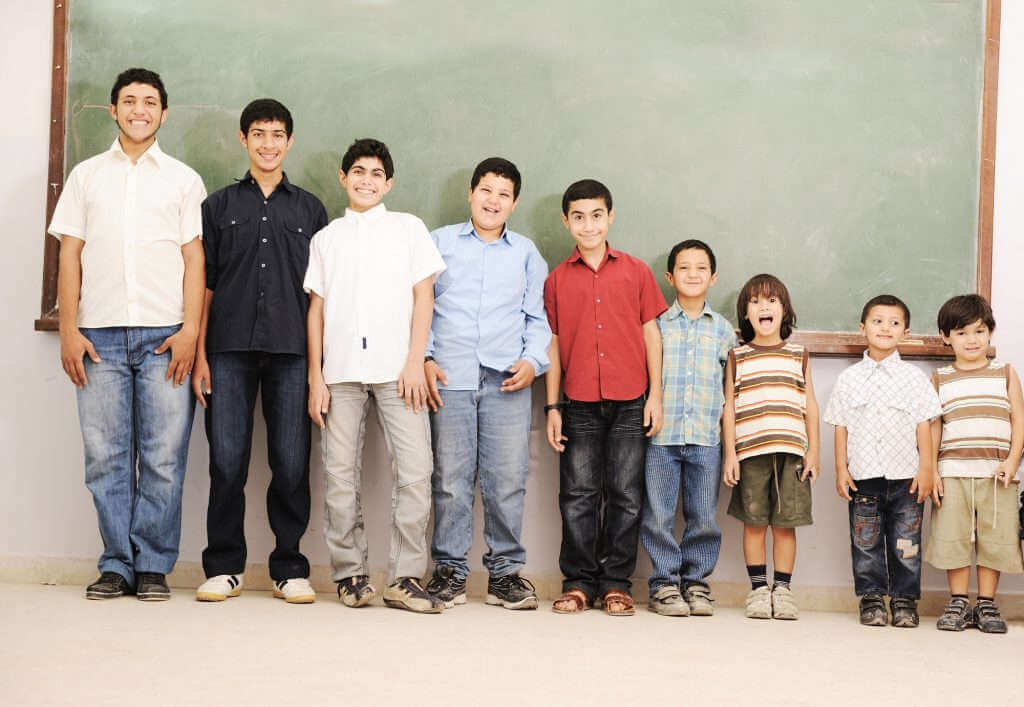Sightlines – Part 3 – How Visual Cues Affect Learning Rooms

Describe Your Favorite Grade School Classroom
If I asked you to describe your favorite classroom as a child, I believe most of you would easily be able to bring an image of that space, and teacher, to the forefront of your memory. Most likely, visual cues such as window placement, wall decorations, your assigned seating arrangement, etc., would help your recall and even remind you of the positive emotions and experiences you had in that classroom. Additionally, many of these remembered visual cues were purposefully considered and placed by your teacher to help you to learn and retain new information. Public schools and universities have dabbled in this arena for years. But now, as more and more companies are providing training opportunities for their employees and customers, conference rooms and training rooms must also be professionally designed to increase learning opportunities and keep participants engaged. Truly, any room, designed for the sole purpose of communication, is indeed a “Learning Room.”
There are Many Types of Learning Rooms
Wikipedia authors state, “Classrooms can range from small groups of five or six to big classrooms with hundreds of students. A large class room is also called a lecture hall. A few examples of classrooms are computer labs which are used for IT lessons in schools, gymnasiums for sports, and science laboratories for biology, chemistry and physics. There are also small group classrooms where students learn in groups of about 7 or less.”
If we are to focus on the business application of Learning Rooms, we find several different options and purposes including the following provided by Sulekha, an IT training and placement firm:
“Meeting rooms are meant for making discussions over business development, holding conferences, etc. Depending upon the purpose, there are many types of meeting rooms and they are designed in a different manner. You need to design a meeting room you require with the help of a professional designer to make the interiors attractive and serve the purpose right.
Conference Rooms
- The purpose of a conference room is to conduct singular events like meetings and conferences.
- Apart from offices, conference rooms are available in commercial places like hotels and hospitals too.
- They are mainly designed with a dais for the person who makes the presentation.
- For security purposes conference rooms are designed in a way that there are no windows.
Presentation Rooms
- They are said to be the standard type of meeting rooms and the purpose is to have media presentations in particular.
- As they are meant for presenting, the design requires much more than an ordinary meeting room.
- The focus is to be mainly on the media for power point presentations and other analysis.
- The room requires extra equipment like projectors, projector screens, etc.
Board Rooms
- As the name suggests, board rooms are meant for holding board meetings with the board of directors of an organization.
- They are meant to take decisions about a present business or starting a new business venture.
- They are fully equipped with different equipment for making presentations and also for video conferencing.
- Board rooms can accommodate many persons as compared to the rest of meeting room types.
Training Rooms
- Training rooms are designed for training the personnel on subjects.
- They are however designed in a classroom fashion with the necessary equipment.
- There are computer terminals and different computer accessories to accomplish better training results.
- While there are a few organizations that conduct training sessions on their own premises, there are some that look for outer premises.”
Designing a Successful Learning Room for Any Purpose
Upon researching the best practices for designing a visually appealing learning room setting, several key elements emerged that AV professionals should consider:
- The need to create a collaborative space in which participants can move freely and have a flexible seating arrangement. Equipment must be able to move quickly and easily.
- Wireless technology is a must as participants may choose to sit, stand, pace, etc. to engage their full senses.
- Interactive technology is also a non-negotiable for the successful learning room.
- Visual cues enhance learning, regardless of the age of the student. Whether the sightline is the instructor, a media source, or a beautiful view, visual cues should be purposeful and meaningful.
“A man’s real education begins after he has left school. True education is gained through the discipline of life.” — Henry Ford
May you enjoy the pursuit of learning and life.

